Despite being less popular than brown rice or wild rice, black rice, known as forbidden rice, is an ancient grain that has even more impressive health benefits than most other closely related rice varieties.
Not only is it the type of rice that is richest in powerful disease-fighting antioxidants, but it also contains dietary fiber, anti-inflammatory properties, and has the ability to help stop the development of diabetes, cancer, heart disease and even weight gain.
Black rice has been eaten in regions of Asia for thousands of years; in fact for centuries it was reserved for only Chinese royalty. Today this type of rice is picking up in popularity and popping up in more health food stores across the US, Australia, and Europe, as people discover the numerous health benefits that whole grain black rice has to offer.
Black Rice / Forbidden Rice Nutrition
One serving of black or forbidden rice contains only around 160 calories, but offers a very high amount of flavanoid phytonutrients, a good source of important fiber, substantial mineral content including iron and copper, and even a good source of plant based protein. Just the outside hull of the grain has one of the highest levels of anthocyanin antioxidants of any food!
A one-half cup serving of cooked black rice, or about ¼ cup uncooked, contains approximately (in daily recommended values):
160 calories
1.5 grams of fat
34 grams of carbohydrates
2 grams of fiber
5 grams of protein
4% DV for iron
Wondering how black rice compares to other rice varieties? Here’s how the different types of rice differ in terms of nutrient content when we compare a 100 gm serving of each kind:
Polished white rice – contains 6.8 protein, 1.2 iron, 0.6 fiber.
Brown rice: 7.9 protein, 2.2 iron, and 2.8 fiber.
Red rice: 7.0 protein, 5.5 iron, and 2.0 fiber.
Black rice: 8.5 protein, 3.5 iron, 4.9 fiber, and the highest amount of antioxidants of any rice variety.
You can see that black rice contains the highest amount of antioxidants, protein and dietary fiber of all rices varieties; plus black rice is also a good source of iron, which can be hard to get for plant based eaters who rely on grains and legumes for protein.
Benefits of Black Rice:
1. Full of Antioxidants
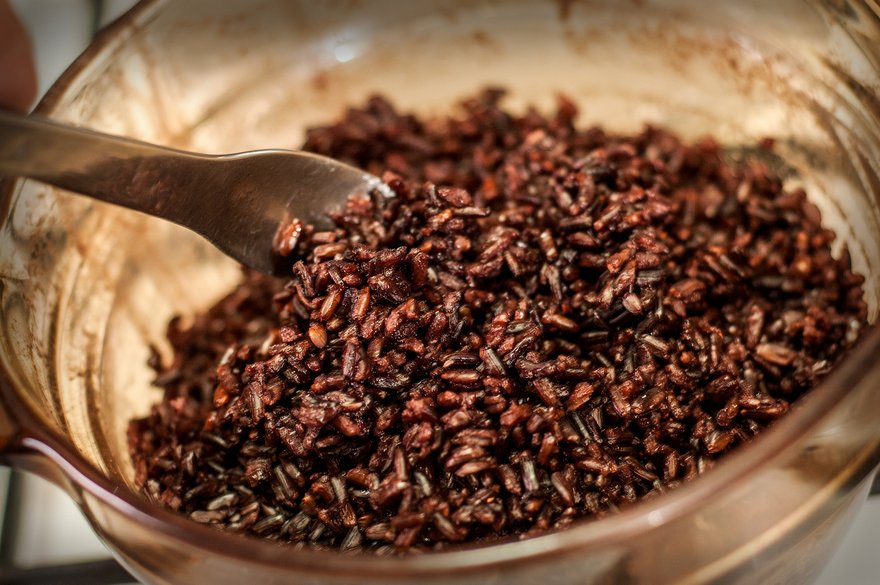
The bran hull of black rice, which is the outermost layer of the rice grain, contains one of the highest levels of the antioxidant anthocyanin found in any known food.
Black rice has a deep black or purple color, which is an indication of its high antioxidant properties, similarly to how deeply colored antioxidant berries like blueberries, raspberries, and cranberries appear.
Sources show that the anthocyanin content of black rice is higher than any other grain, including brown rice, red rice, red quinoa, or other colored whole grain varieties.
Anthocryanin has the ability to help prevent a myriad of common but serious illnesses according to numerous studies that have looked at the benefits of this antioxidant.
Anthocyanin antioxidants have been correlated with: helping to prevent cardiovascular disease, protecting against cancer that can be caused by free radical damage, improving brain function, reducing inflammation and more .
Nutrients are lost from whole grains when the outer layer, the hull and bran, are removed. Only whole grains which include all of their naturally occurring parts retain their antioxidants, vitamins, minerals, and fiber. White rice, in addition to other refined grains, lose these beneficial properties during the milling process.
While whole grain brown rice and red rice also contain beneficial antioxidants, only black rice contains anthocyanin. Additionally, black rice also contains important antioxidant Vitamin E, which is useful in maintaining eye, skin, and immune health in addition to other important functions.
2. Protects Heart Health

Studies have shown that black rice decreases dangerous atherosclerotic plaque formation in the arteries, which is very important for keeping arteries clear and preventing heart attacks and stroke .
The specific anthocyanins phytochemicals found in black rice help to maintain healthy cholesterol levels by reducing total cholesterol, LDL “bad” cholesterol, and total triacylglycerol concentrations. These are 3 factors commonly involved in cardiovascular disease .
Considering how common heart disease is in almost every western developed nation today, this is one reason why consuming healing foods like black rice is so important.
3. Can Help Detoxify the Body

Studies have demonstrated that consuming black rice can help to detox the body and cleanse the liver of harmful toxic build-up thanks to the rice’s high antioxidant content.
In a recent animal study, the antioxidant status of blood, the liver, and one of the main arteries, the aorta, were evaluated in rabbits that were either fed refined white rice or black rice.
Results showed that the rabbits fed black rice experienced less oxidative stress (also called free radical damage), contained more antioxidants in their blood, experienced detoxification in the liver, and also had reduced plaque build-up in the arteries .
The phytonutrients found in black rice help the body to reduce inflammation and to cleanse the body of harmful substances that can contribute to a wide range of conditions.
4. Good Source of Fiber Which Improves Digestive Health

Black rice and other whole grain rice varieties- like wild, red, or brown rices- have a similar amount of fiber, with about 2-3 grams per half cup serving. The fiber in black rice helps to prevent constipation, bloating, and other unwanted digestive symptoms. Fiber binds to waste and toxins within the digestive tract, helping to pull them out and to contribute to regular bowel function.
The dietary fiber found in black rice can also importantly help you to feel full after eating and to stay satisfied for a longer period of time between meals, potentially aiding in weight loss.
Studies have found that a diet high in dietary fiber from whole grain rice varieties is protective against obesity, heart disease, diabetes, and digestive disorders like irritable bowel syndrome (IBS) . This is because fiber has the important job of clearing the body of toxins, helping to reduce inflammation and to clear the arteries as it removes waste and plague from the body . Black rice can also help prevent or cure cases of diarrhea, since fiber adds bulk to your stool.
5. A Naturally Gluten Free Grain

Like other rice varieties, black rice naturally contains no gluten, the protein found in all wheat, rye, and barley products. It’s estimated that 1 in 7 people are sensitive to gluten- whether they are aware of it or not- but still test negative for Celiac Disease.
After eating something with gluten in it, those with a gluten sensitivity suffer many of the same symptoms as those with Celiac Disease (a confirmed allergy to gluten), including bloating, constipation, diarrhea, nutrient deficiencies, and an increased risk for developing leaky gut syndrome. Consuming black rice in place of not only refined grains and processed flour products, but also all wheat, barley, and rye containing foods- even those that are whole grain- can help eliminate digestive problems associated with eating gluten for many people.
6. Helps Slow Down Absorption of Sugar in the Blood, Helping to Prevent Diabetes
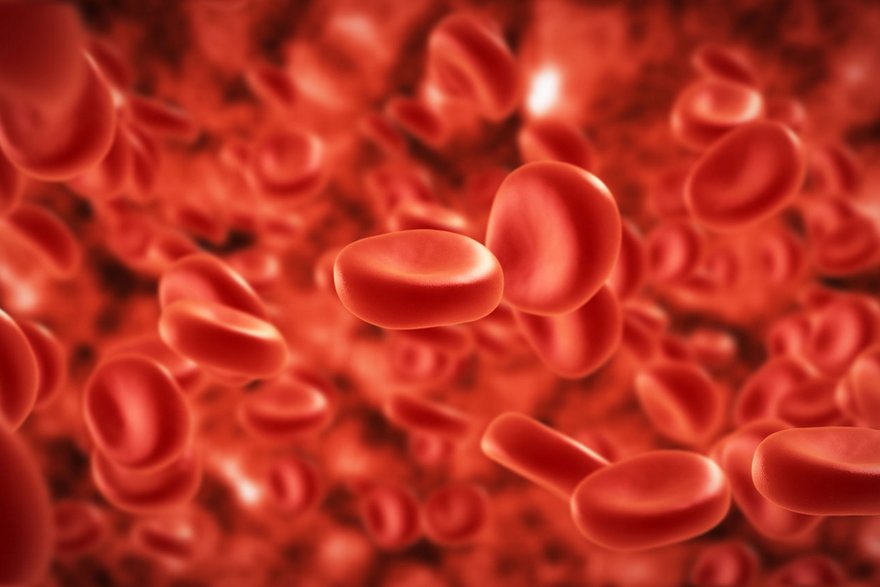
Studies have shown that when it comes to the risk of developing diabetes and even obesity, consuming whole grains is much more beneficial and preventative than consuming refined carbohydrates (8).
Compared to eating processed carbohydrates which are stripped of their fiber, antioxidants, and other nutrients that help to slow down the absorption of sugar in the blood stream, black rice is a much healthier option.
Black rice contains the entire bran of the grain where the fiber is stored, and fiber is able to help glucose (sugar) from the grain to be absorbed by the body over a longer period of time.
When researchers examined white and brown rice consumption in relation to type 2 diabetes risk, they found that white rice was more likely to contribute to insulin resistance and diabetes risk (9).
The substitution of whole grains, including brown or black rice, in place of white rice, white bread, pasta, and sweetened cereals may lower the risk of type 2 diabetes and other complications, in addition to keeping your weight in check and your energy levels balanced.
7. Better at Preventing Obesity than Refined Grains
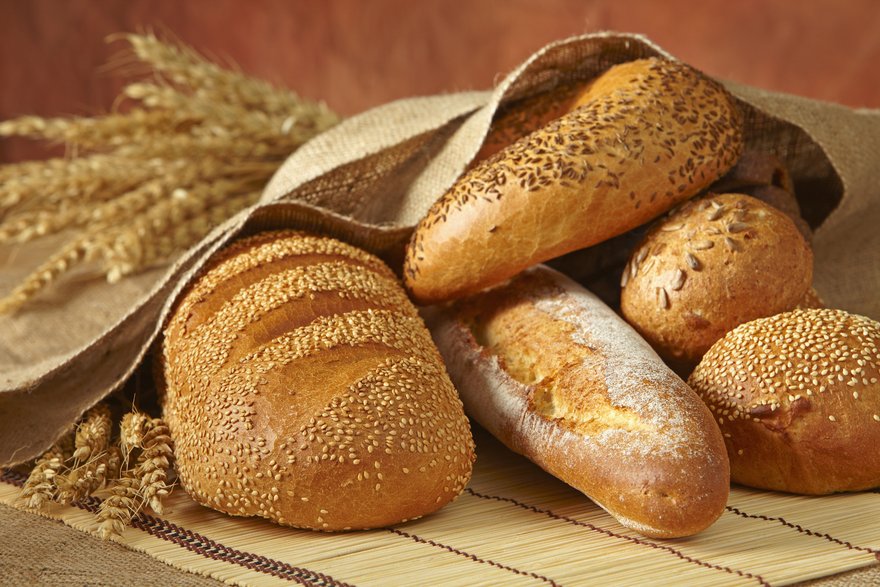
It is very important for those with pre-diabetes, diabetes, or other forms of metabolic syndrome and insulin resistance to consume 100% whole grains, as opposed to processed “white” types that lack fiber.
The same can be said for those who struggle with losing weight, since the fiber and nutrients in whole grain rice helps to shut off hunger signals and prevents overeating. Research has shown that whole grain rice varieties can help prevent insulin resistance that is related to an increased risk for obesity (10).
The History of Forbidden Rice
Black rice is commonly referred to as “forbidden rice” because of its long and interesting history. As you probably know, all rice varieties are a substantial and important crop in the diet of nearly every Asian population, and have been for thousands of years. In China, black rice has been known for being good for the kidneys, stomach and liver since ancient times.
Thousands of years ago in ancient China, noble Chinese men took possession of every grain of the black forbidden rice, banning its consumption among anyone who was not royalty or very wealthy.
The crop was only grown in very limited quantities, closely monitored, and reserved for only the highest elite class.The common Chinese people were not allowed to grow or consume this black forbidden rice, which led to its unique name that it still carries with it today.
Black rice was actually only first introduced to the United States in the 1990’s, although it’s been enjoyed in other parts of the world for many more years. Today it is no longer forbidden, but still is grown in relatively small amounts especially compared to other types of widely available rice varieties.
Where to Purchase Black Rice
The popularity of black rice and knowledge about its numerous health benefits is growing in western nations, including in the U.S, but it still remains much less popular than less healthy white rice and even similar brown rice.
At this time, you can likely find it in most health food stores and large gourmet food markets, in addition to Asian supermarkets. The hope is that as more people learn about black rice’s benefits and demand it, black rice will probably become more widely available at larger chain supermarkets and restaurants.
Because the mentioned health benefits of black rice are found in the bran of the rice, you always want to purchase 100% whole grain black rice. You can be sure you’re getting the correct type by checking the ingredient label and looking for the words “whole black rice” as the first, and ideally the only, ingredient on the list.
How to Cook Black Rice
Black rice comes from the same plant family as other colored rices and includes several varieties, such as Indonesian black rice and Thai jasmine black rice. The different types of black rice contain very similar health benefits and all have a mild, nutty taste which is similar to the taste of more familiar brown rice.
Because it is unrefined and denser than white rice, black rice takes longer to cook. The best results can be achieved by first soaking your black rice for at least one hour before cooking it, but preferably for several hours.
If you can plan ahead of time and soak your rice, you will cut down on the amount of cooking time required and also make the nutrients in the rice more absorbable.
After soaking your rice, rinse the rice clean and then place it on the stove top with two cups of water for every one cup of rice. Boil the rice for at least one half hour if you did soak the rice, and for one hour if you didn’t.
Check the texture of the rice after this time to see if it is chewy and cooked through; if not, keep boiling until it reaches the texture you’re looking for.
Source: draxe.com

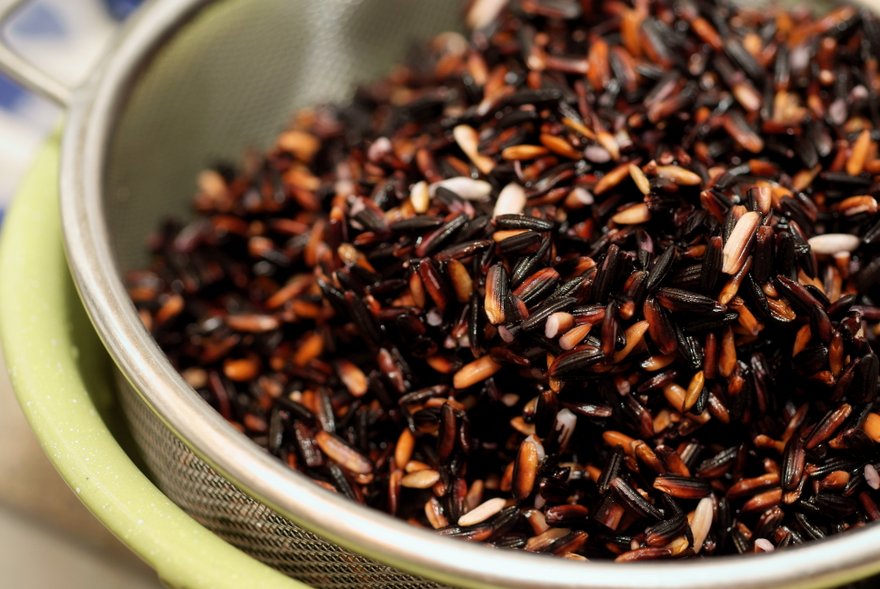
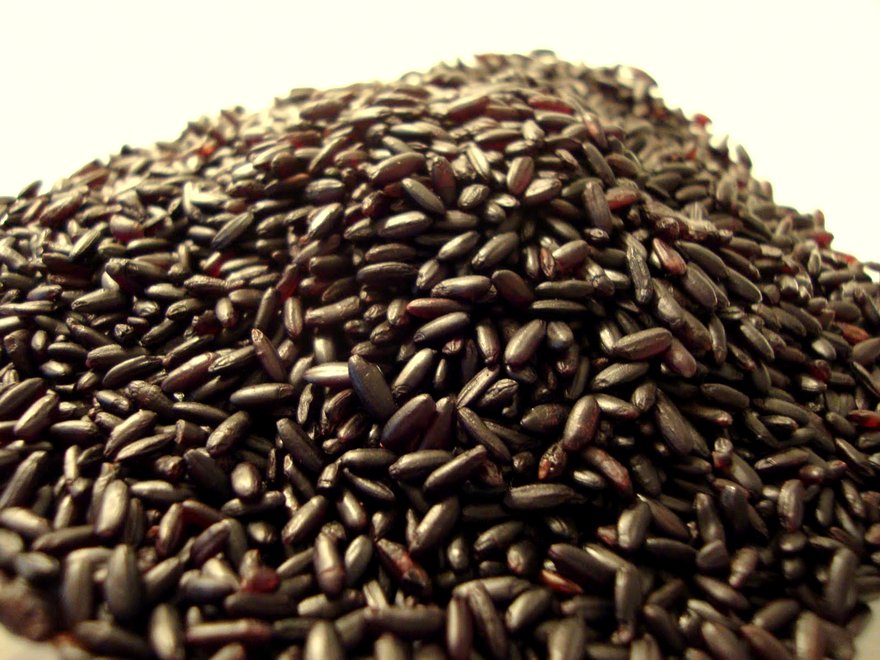

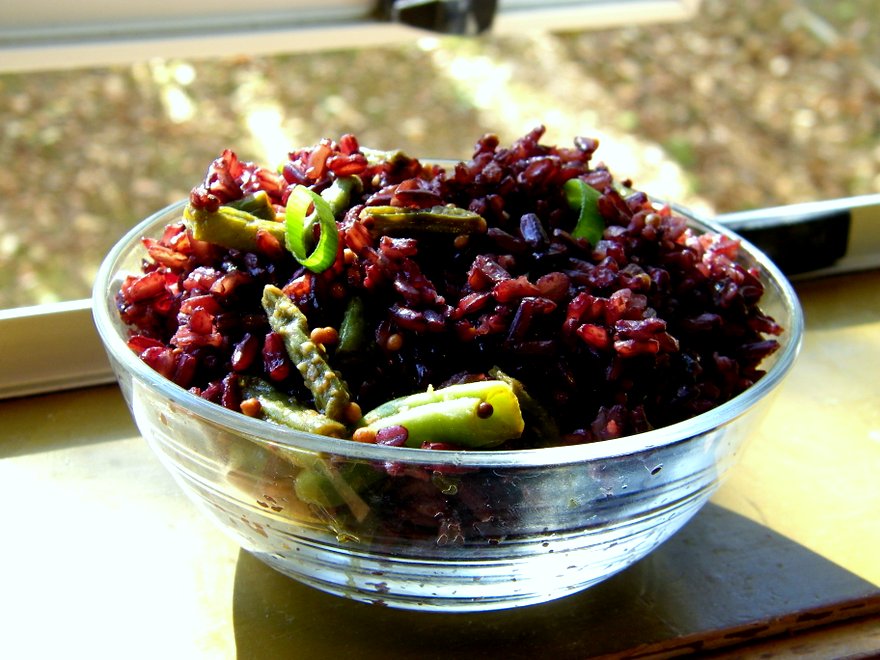
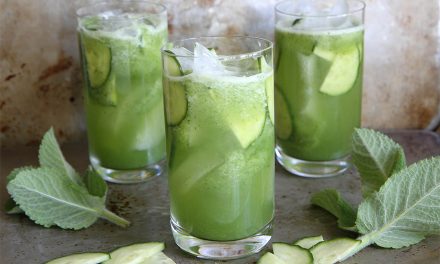

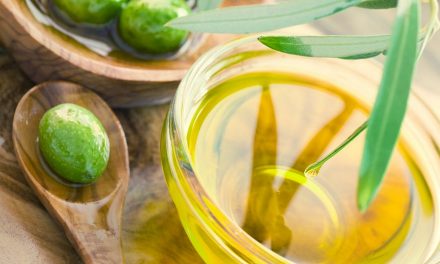







is it available in delhi?
sir , highly useful article, we were knowing brown rice but not black rice, once again thanking you for highlighting for what diaseases it is useful. Its really useful article.
When I see photos of mass feeding of children in schools, pilgrims, etc. I see that the rice served is usually polished white rice. Why is this so? If brown/red rice is more nutritious and cheaper, why do they not serve more of this rice?
Is it available in Mumbai,if yes,where in Mumbai.?
Unfortunately because it is not common in India, we have only seen one or two websites selling it for exorbitant prices, such as 350 rs. per kilo. Hopefully it will become more widely available and the prices will become reasonable.
where would you get blackrice in bangalore.. kindly forward the address
you get black rice at Nilgiris Super Market in Bangalore, you have to specifically, ask for it. It is used for making sweet payasam or kheer.
Good luck to your search
In Malaysia, it is called “pulut hitam”. I assume it is black rice (black/brown in colour). normally cooked as a porridge with coconut milk and sugar… delicious
This black rice is called, cowni arisi in Tamil and Pulot Hitam in Malay. In Singapore we make various kinds of sweet desserts with the rice, using pandanus leaves for fragrance.